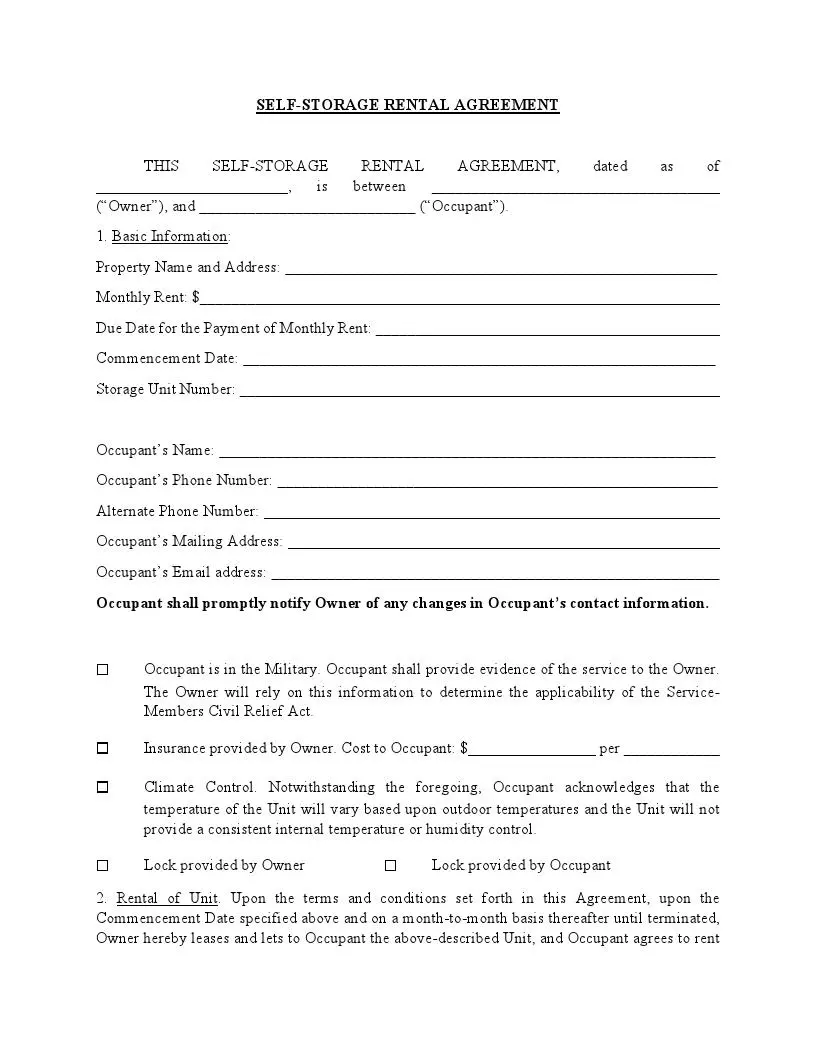
A storage rental agreement is a legally binding lease agreement between two parties. One group is the warehouseman or landlord, who is in charge of storing the merchandise. The other is the occupant or the person who is storing the objects.
It is needed when someone wants to store objects, whether at a person’s home or on a property. This type of lease agreement includes what objects are being kept, as well as the rates or costs and damage repercussions.

Create a Personalized Storage Rental Agreement Form online in under 5 minutes!
Build Your Document
Answer a few simple questions to make your document in minutes
Save progress and finish on any device, download and print anytime
Your valid, lawyer-approved document is ready
. or download your Storage Rental Agreement as a PDF file Create a Personalized Storage Rental Agreement Form online in under 5 minutes! Table of ContentsRenting a unit is a great way to free up space in your home while also keeping your possessions secure. Consider renting a self-storage unit if you need extra room for small vehicles, a short-term storage space for unused furniture, a private closet to keep papers, or just additional space to store items. Here are the different types:
You may need storage space on your property for a short period of time while you are renovating. To solve this problem, individual containers or pods are delivered to your home and left for an agreed-upon period of time by mobile storage companies. These options come in a variety of sizes and materials.
Indoor storage comes in a variety of sizes, from small closets to huge rooms. Dollies or other equipment may be available to help move things from your car to your storage unit. During working hours, employees might also be available to help with heavy lifting.
These units are available in a variety of sizes and the height varies depending on the type of storage facility. These rooms’ doors are made of a special material that rolls up like a garage door. However, even though they seem to be garages, check with management to see if the company allows vehicles to be parked there.
An outdoor storage unit is a common and cost-effective option since many vehicles are commonly stored in outdoor plots. Covers with wire mesh partitions are popular materials to use in an outdoor setup. You’ll want to look for various types of storage units if your things need to be protected from rain and other weather.
Some self-storage contracts are straightforward, whereas others can leave you completely perplexed. Before you sign on the dotted line, it’s a good idea to read up on lease agreements.
Each commercial lease template is unique, as terms can differ depending on the laws of each state. These four main areas will be covered in all contracts:
1. Discuss the payment setup.
The monthly payment due will be specified in any contract when renting a unit. It will also specify how payments will be accepted, such as by electronic means, check, or credit card.
2. Follow guidelines.
Every property has its own set of rules, and every lease should clearly explain what a lessee can and cannot do with their unit. The contract’s liability clauses should also indicate what will happen if either party violates the law, which may include an additional fee, eviction, or even financial loss.
3. Give timely notifications.
Almost all self-storage contracts are month-to-month, so if you don’t call to give notice by a certain date, your contract can renew for another month. When preparing to shift things out of your storage unit, keep those timelines in mind. There could be other times when you need to notify the property owner, such as if you’ve moved to a new place or changed your phone number.
4. Check the scope of your responsibility.
A lease agreement for self-storage is a two-way route. The facility has some rights and obligations too. There are limits on what they can and cannot do, and those limits should be spelled out in the contract.
| Document Name | Storage Rental Agreement Form |
| Other Names | Storage Unit Lease Agreement, Self Storage Contract |
| Avg. Time to Fill Out | 9 minutes |
| # of Fillable Fields | 42 |
| Available Formats | Adobe PDF |
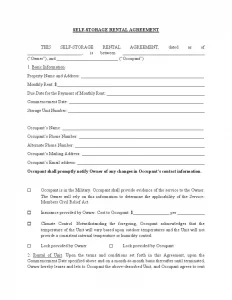
Step 1 — Download the storage lease agreement Form.
Choose the file that is compatible with your computer:
Step 2 — Fill out the opening paragraph

Step 3 — Include the basic information about the unit.

Step 4 — Type the occupant’s contact information

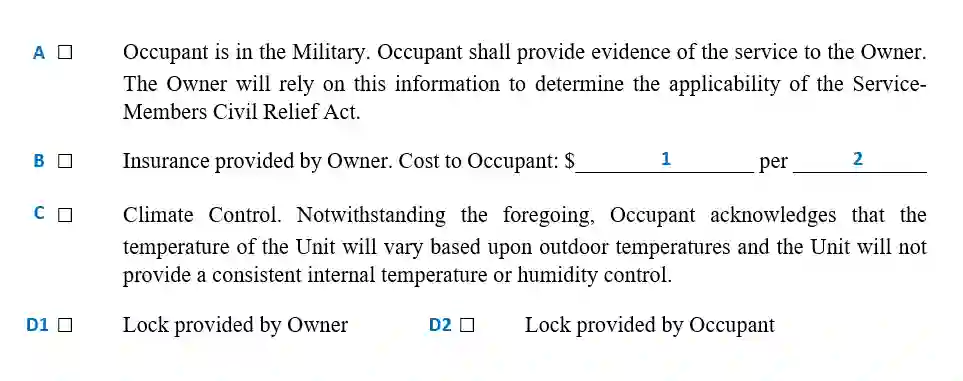
Among the boxes above, check all that applies. Below are some explanations for clarification:
Step 5 — Read the standard provisions
Facilities normally have fixed, non-negotiable terms for the safety of all occupants in accordance with the law. While each party has his or her own responsibilities, most of the liability rests on the owner, so all provisions in the contract must be clear. These are reflected in Formspal’s storage lease agreement template (refer to Step 1) and are detailed as follows:
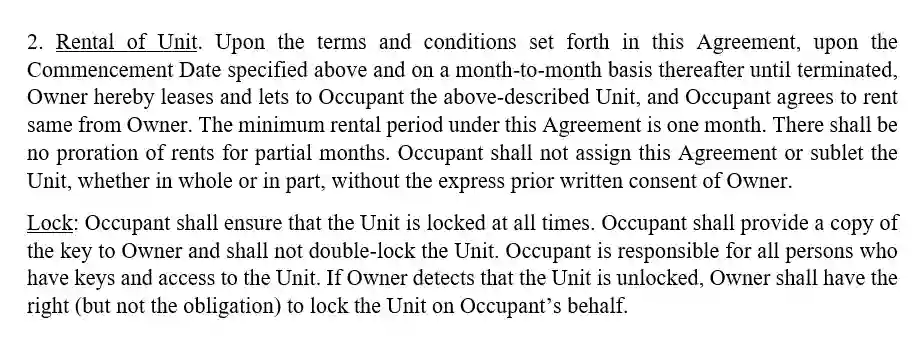

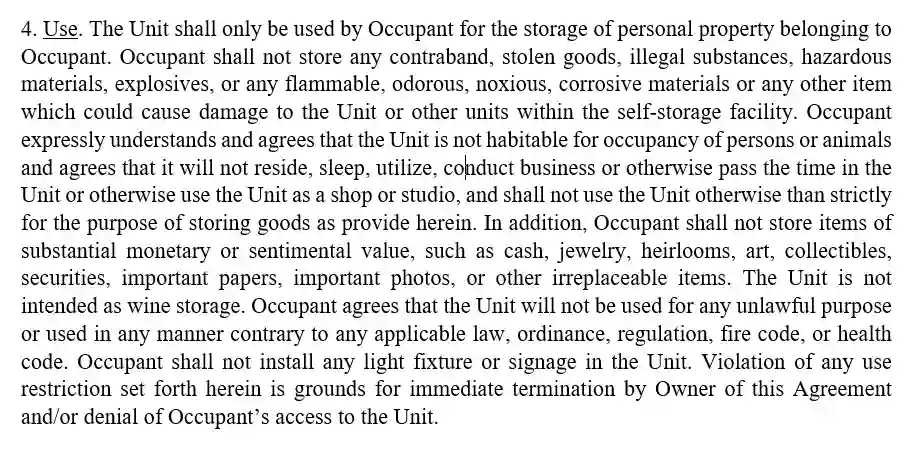

For section 5, write the estimated value of the property stored inside the storage unit. To avoid complications, landlords may limit the maximum value to the amount covered by the policy provider. You may ask the landlord to include this information on blank 1, but take note that the owner is not liable for theft or loss.
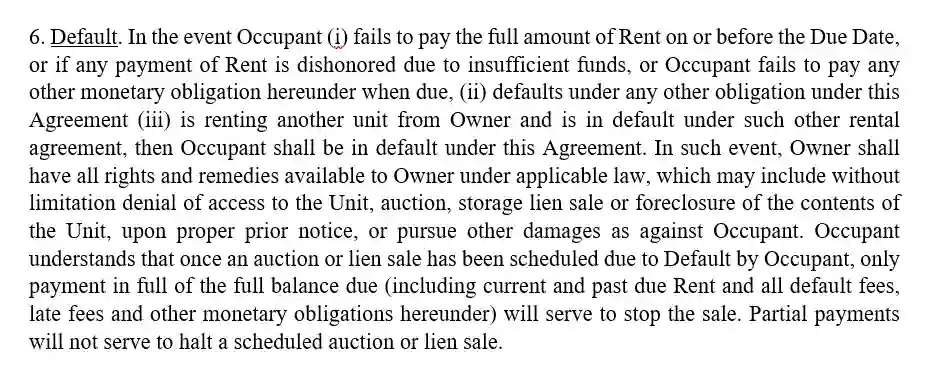
Once both parties agree to Sections 2 to 6, you may now proceed with filling out the next section.
Step 6 — Discuss where payments should be made.

Step 7 — Check who has access to your personal storage unit.
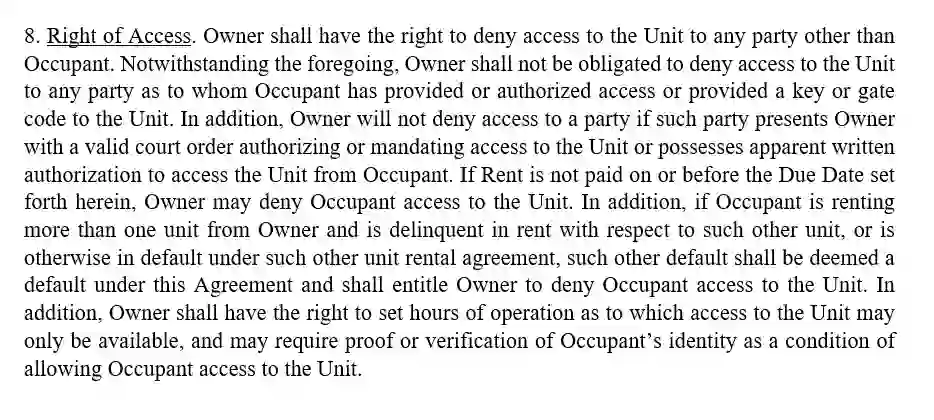
The above section discusses the strict guidelines for access. These are usually non-negotiable but writing a simple written notice can allow access to other family members or trusted friends.
Step 8 — Itemize the additional fees.

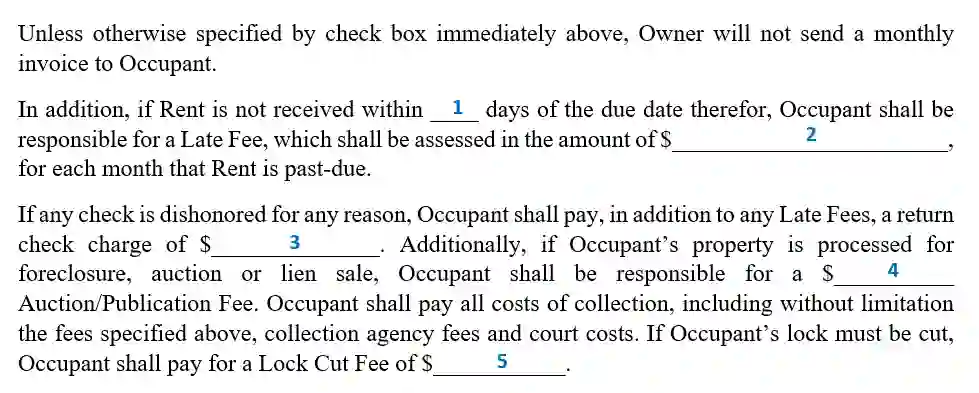
Step 9 — Read the rest of the paragraphs.
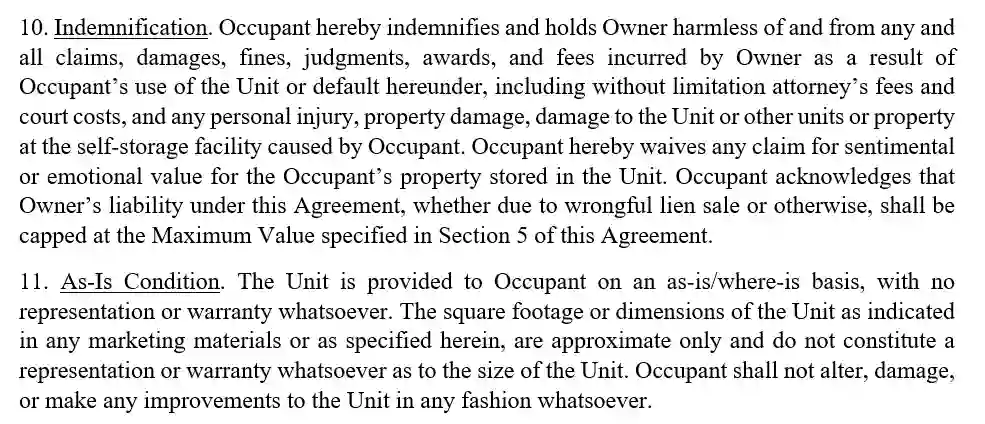
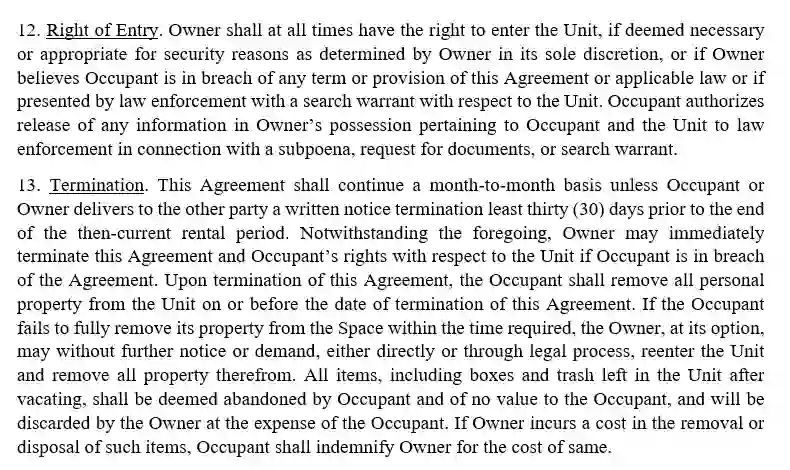



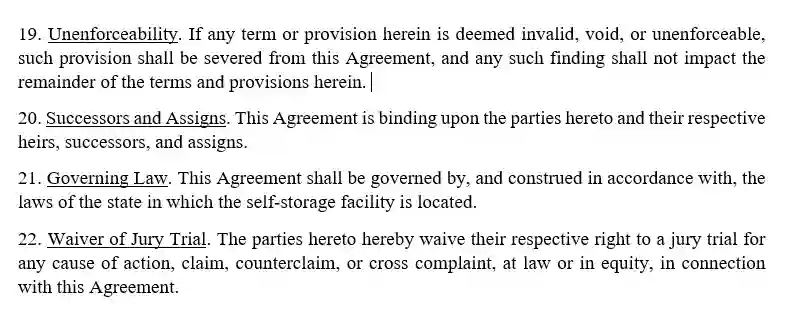
The above sections discuss legal defaults and liability clauses, so it is a must to review everything. After reading sections 10 to 22, both parties can proceed with signing the agreement in the next step.
Step 10 — Sign the legal document.
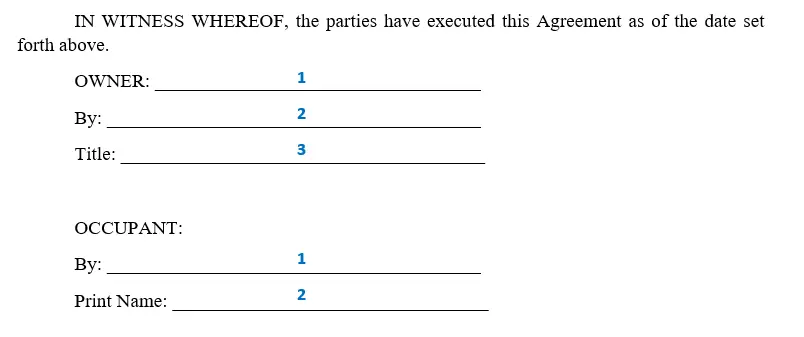
Self-storage companies let you use their storage space and allow you to arrange your own transportation to and from the facility. Full-Service, on the other hand, offers a one-stop-shop for safekeeping and distribution. They provide consumers with integrated moving and packing facilities as well as a hassle-free experience. Pickup and drop-off are also possible.
Yes, it is possible and will happen unless you take action.
A charge is placed on your possessions the day you sign the lease. This allows the facility to sell the unit’s contents as lien and recoup what it owes if you don’t pay the rent. However, they won’t hold an auction right away. Normally, you’ll first receive a notice of lease termination and will be allowed to pay your outstanding balance in cash. If you do not respond within a certain period, only then will your belongings be sold.
If someone is found living in a facility or using it to conduct business transactions, they will almost certainly be evicted right away and the agreement will face termination. One could also face legal consequences, especially if they have children since these units are not considered suitable for human habitation. Aside from having low-quality materials, storage units are not inspected for health and sanitation permits.
If you are a customer or renter, securing a storage rental agreement is the best way to ensure the safety of your personal belongings and other valuable items. On the other hand, if you are the owner, having this document can save you from legal battles and problematic tenants. Either way, Formspal can definitely help you create a detailed agreement for renting a storage space.